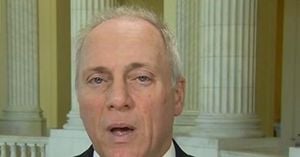In a stunning upset that has sent shockwaves through the political landscape of Iowa, Democrat Catelin Drey clinched victory in the special election for Iowa Senate District 1 on Tuesday, August 26, 2025. Drey, a 37-year-old Sioux City native, captured 55% of the vote against Republican Christopher Prosch’s 44%, according to unofficial results from the Woodbury County Auditor’s Office. This win marks a dramatic shift in a district that, just last year, handed former President Donald Trump an 11-point victory. The result not only signals a potential realignment in Iowa’s political fortunes but also breaks the Republican supermajority in the state Senate—a dominance the GOP had enjoyed since the 2022 midterms.
The special election was called by Governor Kim Reynolds after the untimely death of Senator Rocky De Witt from pancreatic cancer in June. While Republicans still maintain a strong 33-17 majority in the Senate, the loss of the supermajority has immediate and far-reaching implications. Without the two-thirds threshold, the GOP can no longer unilaterally approve gubernatorial nominations for boards, agencies, and commissions, nor can they override a gubernatorial veto without at least some Democratic support. This dynamic is especially significant as Reynolds enters the final year of her term and with the gubernatorial seat set to be open in 2026.
Drey’s triumph didn’t happen in a vacuum. It’s the latest in a series of special election victories for Iowa Democrats in 2025, each one chipping away at what had seemed like an impenetrable Republican stronghold. Back in January, Senator Mike Zimmer flipped a Republican seat in eastern Iowa, a district Trump had previously carried by 21 points. In April, Representative Angelina Ramirez expanded the Democratic margin in a reliably blue Cedar Rapids district by a staggering 26 percentage points over Kamala Harris’s 2024 presidential performance. Even in districts where Democrats fell short, such as the March special election in southeastern Iowa, the party managed to lose by only 3 points in a district Trump had won by 27—a double-digit improvement and a sign of shifting tides.
National Democrats recognized the importance of the District 1 race early on. According to The Hill, the Democratic National Committee and allied organizations poured resources into the contest, mobilizing over 30,000 volunteers—a figure confirmed by both party sources and Republican critics. The effort paid off, with Drey’s campaign not just winning but outperforming the most recent Democratic presidential nominee’s results by a whopping 22 points in the district. “For the fourth special election in a row, Iowa voted for change,” Iowa Democratic Party Chair Rita Hart declared in a statement. “Our state is ready for a new direction, and Iowa Democrats will keep putting forward candidates who can deliver better representation for Iowans.”
The enthusiasm among Democrats is palpable. Heather Williams, president of the Democratic Legislative Campaign Committee, told NBC News, “Iowa voters have watched as Trump’s tariff tax fiasco has hurt farmers and the GOP’s Medicaid cuts have put their community’s hospitals in jeopardy—all while Iowa Republicans have buried their heads in the sand. Working families across the Hawkeye state know they deserve better, which is why they’re turning to state Democrats who are willing to stand up to Trump’s disastrous policies, even in red districts he carried by double digits last November.”
Yet, Republicans are not without their counterpoints. Iowa GOP Chair Jeff Kaufmann dismissed the Democratic mobilization as “desperate,” asserting, “National Democrats were so desperate for a win that they activated 30,000 volunteers and a flood of national money to win a state Senate special election by a few hundred votes.” Republican strategist David Kochel echoed the skepticism, warning, “I think it’s a mistake to read too much into these special elections, because the turnout is so low—and when the Democrats are particularly motivated. Iowa is still a Republican state. It’s going to be a Republican state.”
Indeed, turnout in Drey’s race was strikingly low: just 7,600 ballots were cast, representing only 24% of eligible voters, compared to more than 14,000 in the 2022 general election for the seat. This fact is not lost on political analysts from both parties, who caution that off-year, low-turnout special elections may not be perfect predictors of future statewide contests. As Debbie Cox Bultan, CEO of the NewDEAL strategy firm, put it, “It’s a snapshot in time. I don’t think we should put all of our stock in it. It’s encouraging, but absolutely we cannot rest on our laurels and think we’re going to get there only by people voting against Trump. We’ve got to give them something to vote for.”
Nevertheless, Democrats see these special election results as more than just isolated blips. State Sen. Sarah Trone Garriott, who is running in Iowa’s 3rd Congressional District, described the gains as “a really great sign that Iowans are fed up and they’re ready for something better and something different.” Christina Bohannan, a Democratic House candidate, added, “It really confirms what we’ve been seeing and feeling on the ground here for the last couple of months. Iowans are ready for change. They are absolutely fed up with the status quo.”
The implications of Drey’s win extend beyond the statehouse. With Governor Reynolds not seeking a third term in 2026, both parties are gearing up for a hotly contested gubernatorial race. Democratic State Auditor Rob Sand is widely seen as his party’s frontrunner, while U.S. Rep. Randy Feenstra has formed an exploratory committee and is expected to announce his candidacy for the Republicans in September. The Cook Political Report currently rates the governor’s race as “Lean Republican,” but Democrats hope their recent successes signal a path to victory.
Other races are also heating up. Iowa’s 1st and 3rd Congressional Districts are expected to be highly competitive, with Cook rating the 1st as a “toss-up” and the 3rd as “Lean Republican.” On the Senate side, Republican Joni Ernst is up for re-election, though her race is rated “Likely Republican.” Iowa hasn’t sent a Democrat to the U.S. Senate since 2008 or elected a Democratic governor since 2006, underscoring the uphill battle Democrats still face.
Meanwhile, the political reverberations aren’t limited to Iowa. In Georgia, Democrat Debra Shigley is expected to advance to a runoff in a special state Senate election in a district Trump carried by 34 points—a sign that Democratic enthusiasm isn’t confined to the Midwest. The runoff is scheduled for September, and while the odds are long, even incremental gains in such deep-red territory are being closely watched by both parties as bellwethers for broader national trends.
As Iowa heads toward a pivotal midterm season, one thing is clear: the old political maps are being redrawn, and both parties are scrambling to keep pace. Whether these special election victories are the first cracks in a red wall or just temporary shifts in a state known for political surprises remains to be seen. For now, though, Democrats have every reason to celebrate—and Republicans, every reason to regroup.





